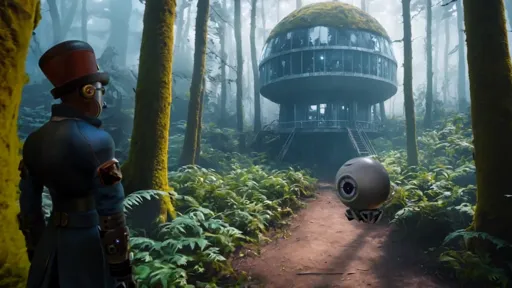
Roberto Iacoviello, Alberto Ciprian and Davide Zappia (Rai)
Generative AI has the potential to democratize content creation but retains some limitations for now. An IBC Accelerator project, titled Generative AI in Action and led by the EBU and Rai, involved the creation of an animated pilot inspired by “Around the World in 80 Days”. It used state-of-the-art AI tools for scriptwriting, concept art, storyboarding, animation, and audio. The project also involved EBU Members Yle and ITV along with Somersault, Xansmedia and Pluxbox.
The aim was to develop an end-to-end production workflow leveraging generative AI tools. The primary objective was to test the feasibility of generative AI in producing cohesive, high-quality content, and to explore its implications for democratizing media production traditionally limited to experts.
The selection and testing of AI tools prioritized transparency regarding copyright and effectiveness. Tools such as ChatGPT, Dramatron and Gemini were employed for scriptwriting, while DALL-E, Firefly, and Stable Diffusion were used for concept art and style images. Runway and Kling AI enabled image-to-video conversion, and Respeecher facilitated voice modulation for audio production.
Workflow overview
There were five stages to the workflow:
- Scriptwriting: an interactive process that involved guiding the AI with prompts to ensure narrative coherence. On average, 4-5 iterations were required for satisfactory results.
- Concept art and storyboarding: the initial focus was on defining the mood and style of the content, independent of visual coherence. This phase guided the overall artistic direction and narrative tone.
- Style images: following the concept art phase, style images were created to establish visual consistency. Backgrounds were generated first, followed by the composition of characters into these environments, ensuring seamless integration. On average, creating style images required 10-15 iterations per image and significant attention to detail.
- Animation: the project employed image-to-video techniques to overcome the limitations of text-to-video tools, achieving smoother transitions while retaining stylistic fidelity.
- Audio: pre-recorded phrases were transformed using Respeecher, ensuring tonal alignment with the characters.
Hardware requirements varied significantly. While online tools required minimal resources, generating content locally necessitated high-performance GPUs.
The project showcased the versatility and potential of generative AI in media production. A polished script, concept art, and storyboard were developed, establishing the foundation for the pilot episode. The team animated one minute of the pilot and created a one- minute title sequence, demonstrating the feasibility of the workflow.
In terms of performance, generating a single high-quality shot required 10-15 iterations, with each iteration averaging two minutes. While these metrics highlight the computational demands of generative AI, they also underscore its capability to deliver high-quality results with careful refinement.
Promise and limitations
This project has demonstrated how generative AI can simplify pre-production tasks such as scriptwriting and storyboarding. However, the journey towards fully autonomous video production remains a challenge, as advancements in AI capabilities are necessary to achieve broader adoption. Feedback from industry professionals, including experts at Rai, validated the project’s approach. While the pre- production elements were lauded for their efficiency and quality, the video outputs were deemed not yet ready for public broadcasting. This constructive critique highlighted both the promise and the current limitations of generative AI in media production.
Future goals include making these tools more accessible to non-experts and enhancing automation to simplify the creative process further.
Additionally, integrating multimodal AI workflows that seamlessly combine text, visuals, and audio will be critical for establishing a holistic production pipeline.
Ultimately, this study demonstrates how generative AI can be a transformative ally in storytelling, unlocking new creative possibilities and inspiring the next generation of media professionals to embrace innovative technologies.
The final video is available here.
This article first appeared in the March 2025 issue of tech-i magazine.
